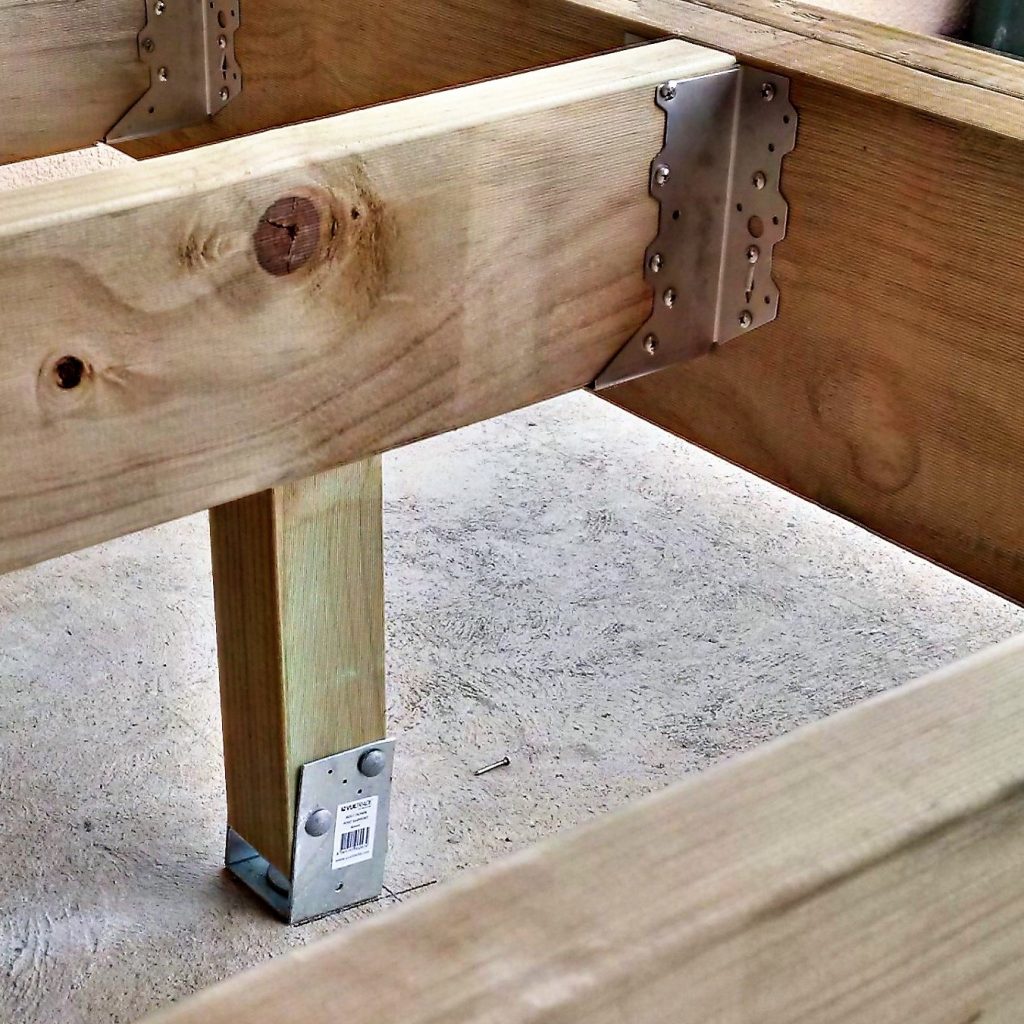What is underneath your timber decking, what’s behind the internal and external cladding holding your home’s timber framing together? You might say why does it matter, who sees it?! And obviously we are a little obsessed about timber connectors at VUETRADE, because that’s what we live and breathe! But it is actually important; very important to make sure that your builder is using the correct products and installing them correctly.
This came to our attention recently when a VUETRADE staff member saw some work in progress at a coastal building site.  As you can see the post supports are galvanised whilst the joist hangers are Stainless Steel. We find it intriguing why the builder would see the need for a stainless steel joist hanger but not a post support?! Of course, once this home is completed all these brackets will be concealed, but being right on the beach and exposed through the timber decking those post supports will rust and corrode over time. The rate of corrosion is a lot faster than its average rate just because of its occasional exposure to salt water for homes by the beach!
As you can see the post supports are galvanised whilst the joist hangers are Stainless Steel. We find it intriguing why the builder would see the need for a stainless steel joist hanger but not a post support?! Of course, once this home is completed all these brackets will be concealed, but being right on the beach and exposed through the timber decking those post supports will rust and corrode over time. The rate of corrosion is a lot faster than its average rate just because of its occasional exposure to salt water for homes by the beach!
Timber connectors are used for a reason, to provide the correct structural strength for your home so it can stand strong and withstand years of onslaught from the elements. There are many aspects to consider and we have detailed some of these briefly below, focusing mainly on where stainless steel should be used and commonly isn’t.
(We always recommend you consult with your local area regulators and your builder for the correct advice for your area – the below is just a guide to help you see where the potential pitfalls could be)
COASTAL AREAS
This is an area we feel passionately about. Coastal construction should use Stainless Steel Timber connectors for all exposed areas as ordinary galvanised brackets will corrode over time when exposed to salt environment. This will result in structural problems and in addition rusty brackets look very unsightly. Our Stainless Steel range offers not only additional protection against salt attacks but also a stylish and shiny finish!
Sea salt can be carried in the air, so depending on your proximity to the sea, stainless steel should be used in any area that could potentially come in contact with air borne salt.
The other thing to bear in mind is that the salt attack can happen further inland that you might imagine! From researching many articles, our basic recommendation is that it should be used up to 5 kms from the coast. VUETRADE CoastalSS for use within 5kms of the coast. However wind borne salt can in some areas and circumstances reach much further inland.
POOL DECKS
Timber decking is an often overlooked area where what’s hidden underneath the timber can have a large impact on the longevity of your deck. Whether it is a saltwater pool or a chlorinated pool, water splashes from the pool will speed up the corrosion process of an ordinary galvanised timber connector.
DAMP AREAS
Whenever there is excessive water or dampness in the atmosphere there is the potential for premature corrosion of galvanised timber connectors and fixings is always there.
If you live in an area with excessive rainfall or dampness, check with your local area building authority or builder to see if stainless steel would be a better option, especially if you have gone to the effort to select a quality timber that won’t rot in a damp environments.
(Mandatory and recommended usage of stainless steel timber connectors varies in different states and areas. Each area has a different classification depending on the type of salt water in the proximity (eg surf, exposed, calm). Therefore, it is advisable to always check with your local building authorities. Wind borne salt spray from surf sea areas can reach inland between 3-6kms. Stainless Steel brackets are also in demand as stainless steel ensures durability and prevents corrosion of metal brackets from other environmental factors in the harsh Australian climate. VUETRADE CoastalSS stainless steel brackets should always be used with Stainless Steel fixings)